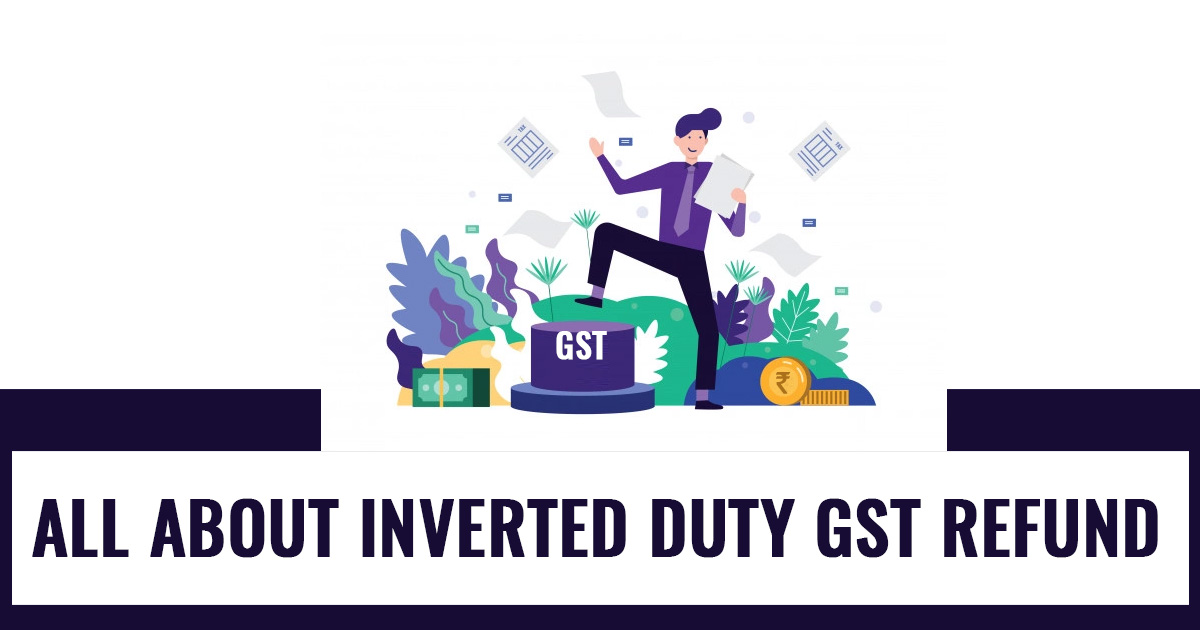
Understanding Inverted Duty Structure:
The Inverted Duty Structure refers to a scenario where the tax rate on inputs (raw materials, components, etc.) is higher than the tax rate on the output (finished goods). This misalignment can lead to the accumulation of excess input tax credit (ITC) and liquidity issues for businesses.
New formula as per Rule 89(5):
(W.e.f. 5th July 2022)
Revised formula is applicable prospective, i.e. only for applications filed on or after 05.07.2022. This formula is not applicable for applications filed before 05.07.2022. Pl refer Circular No.181/13/2022 dated 10.11.2022 for more details.
Maximum Refund Amount = {(Inverted Turnover) x ITC on Input Goods ÷ Total Turnover} – {Output Tax on Inverted Turnover x (ITC on Input Goods ÷ ITC on Input Goods and Input Services)}
List of documents required for Inverted Duty Structure:
- GSTR-1 and GSTR-3B copy of the relevant period.
- GSTR-2A copy of the relevant period.
- Statement of invoices (Annexures-B)
- Declaration under 2nd & 3rd Proviso to section 54(3)
- Statement 1A under rule 89(2)(h)
- Invoices Self-certified copies entered in Annexures-B whose details are not found in GSTR-2A or 2B of the relevant period
- Statement 1 under rule 89(5)
- Declaration U/s 54(3)(ii) (not used for Nil or exempt supply)
- Self-declaration under rule 89(2)(I), if the amount claimed, does not exceed two lakh rupees, certification under rule 89(2)(m) otherwise
- Refund Working
Steps to Claim Refund Under Inverted Duty Structure:
Step 1: Fill and file RFD-01 on GST Portal. ARN will be generated by the GST Portal.
Step 2: Print the filled application and the Refund application ARN Receipt generated available on the portal.
Step 3: Submit the printed documents with relevant supporting documentation to the jurisdictional authority.
Step 4: A tax official will process the refund application. Once the application is processed, a refund will be disbursed manually.
Step 5: Contact the Nodal officer of the corresponding state/centre in the case where the jurisdictional authority of the state/centre is not yet allotted.
Once you have applied/claimed for refund under the inverted duty structure, you also need to track your application right? Here is how you can do it.
How to Track Refund Application?
You have the following provisions to track your refund claim application:
- Download PDFs of the Filed applications (ARNs) using the My Saved / Submitted Applications option under Refunds.
- Track the status of the Filed applications using the Track Application Status option under Refunds.
Conclusion:
The Inverted Duty Structure under GST presents a challenge for businesses, particularly those operating in sectors with significant differentials in tax rates between inputs and outputs. However, by understanding the concept and following the prescribed procedures for claiming refunds, businesses can mitigate the adverse effects and ensure smoother operations. Effective management of input tax credits and timely refund claims are essential for optimizing working capital and maintaining competitiveness in the market.
This article is only a knowledge-sharing initiative and is based on the Relevant Provisions as applicable and as per the information existing at the time of the preparation. In no event, RMPS & Co. or the Author or any other persons be liable for any direct and indirect result from this Article or any inadvertent omission of the provisions, update, etc if any.
Published on: February 22, 2024
